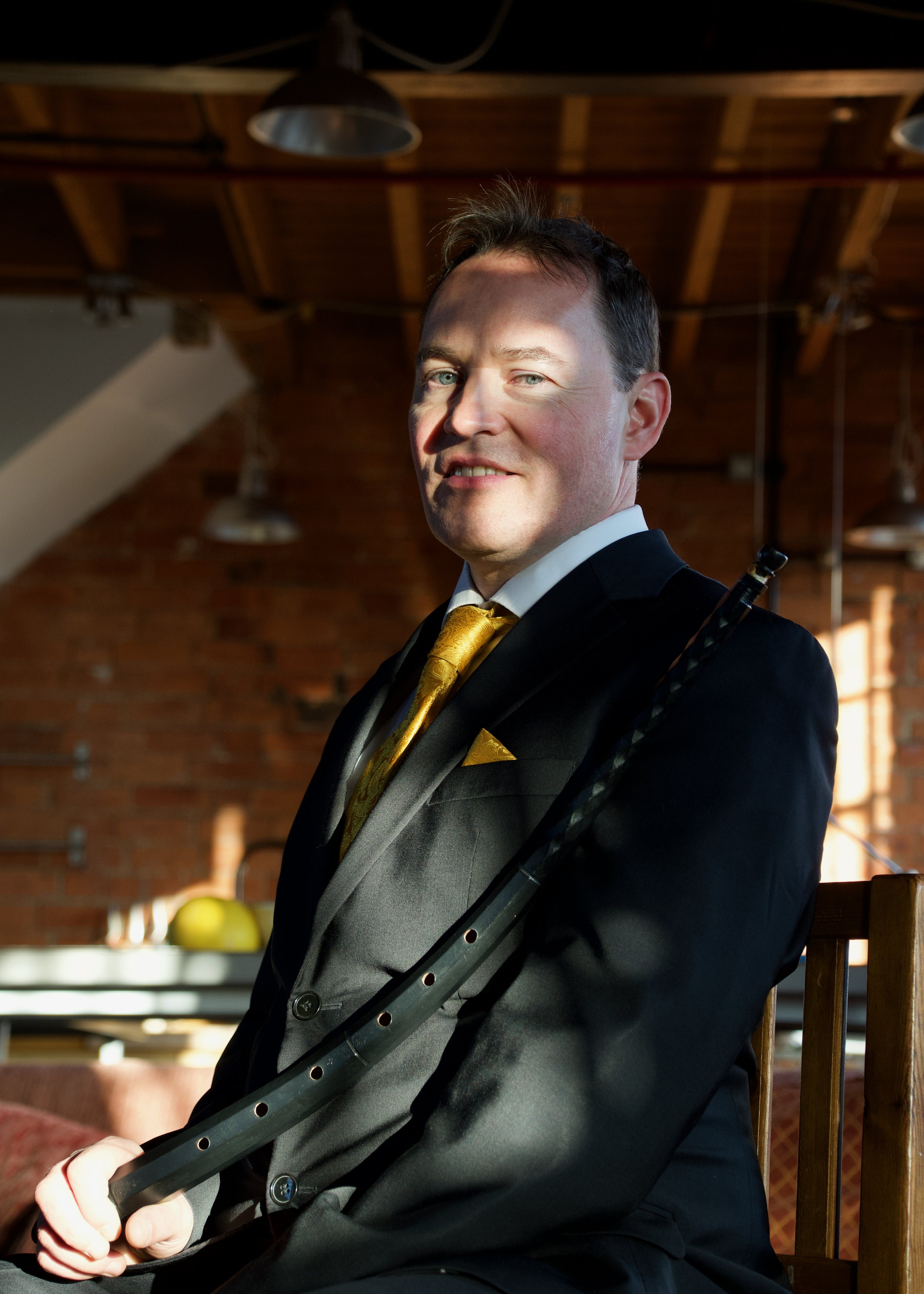Cornett
by Adrian Woodward.
Jeremy West - Cornett
The first time that I had heard the Cornett was when a colleague of mine played one in the break room at music college. The sound was so beguiling, and I was curious of the colour (the leather is black) and its curved shape. Being a trumpet player rather than a recorder player, I didn’t expect to overcome an instrument that had finger holes!
The fabulous fruitwood cornetts that I play are beautifully handcrafted by Sam Goble, and the tropical hardwood mouthpiece is made by craftsperson Matt Jennejohn.
I listened to some solo recordings of the best European players around and quickly became seduced by its ‘liquid’ sound, produced by blowing through a tiny mouthpiece. The first few times that I blew it, I sounded more like a professional kazoo player than cornett, but I was eager to find the sound that I heard on the recordings. Later, my ears became attuned to a better sound, and I was able to hear the variety of articulations that a professional players would employ (with their tongue) also to hear the way players nuance and shape each phrase. I had previously thought that this was the domain of violinists!
All the wind instruments of the 16th and 17th Century came in all different shapes and sizes. The cornett was no exception as they were employed for the higher notes (treble and ‘mute’) the middle parts (alto and tenor- the latter known as the ‘Lizard’ as it is shaped like a giant letter S), and the odd looking, twisting bass cornett.
Cornett players would often team up with trombone players, to make an ensemble that was at home playing vocal music as well as instrumental music. The cornett players could play incredibly fast and dazzled audiences with their clever use of ‘structured’ improvisation, dividing up their musical notes with bar upon bar of fast quavers or semiquavers. This structure had rules, one of them being that when improvising, players need to follow the essence of the musical line in the written music. To help to foster this tradition, many eminent cornett players including Dalla Casa and Giovanni Bassano wrote improvisation manuals which included 100’s of these improvisations or ‘diminutions.’ That said, I think that the cornett’s greatest asset was its unusual, indescribable sound that could change, almost ‘chameleon-like’ depending on the sound-environment with which it plays. Whether playing outside with shawms on a balcony at Shakespeare’s Globe Theatre, or with singers in the Basilica of St Mark’s square in Venice for the Doge, with Sackbuts and assorted reed instruments in the Great Hall of Henry VIII’s Palace at Hampton Court, or simply with a period chamber organ in a recording studio. The simple fact is that all cornett players playing today sound completely dissimilar.
All players and listeners describe the sound in different ways, and I would suggest that it has a vulnerable quality, almost fragile and melancholic. I imagined that in the extraordinarily long period of its great success, that it was a sound for connoisseurs, for people with good taste, akin to eating an expensive truffle chocolate.
If I was to describe in one word how you might play the Cornett rather than a trumpet, I would say that you need to ‘coax’ out the sound, until the instrument comes to life.


